POPULATION TRENDS Rapid Population Growth, Urbanisation and Mass Migration POPULATION GROWTH: Due to industrialisation, and developments in medical technology, the global population has grown from less than 3 billion in 1950 to more than 6 billion by 2000, with most growth being in the developing countries of the non-Western world. URBANISATION: In 1950, around 30 percent of the global population lived in cities. By 2007 it was more than 50 percent (for the first time in world history). This is a HUGE topic that goes way beyond problem of pouring masses of humanity into confined spaces then leaving them to compete for limited resources, jobs, power etc. Rapid urbanisation is disastrous, and nowhere are the problems more profound than in the mega-cities of the developing world. MASS MIGRATION: This includes: (1) mass migrations of mostly traditional and religiously conservative peoples from rural areas into modern/progressive urban centres; (2) mass migrations – including predatory migrations, which tend to be strategic and state sponsored, encouraged in mosques and facilitated by military – across ethnic-religious “fault-lines”. Examples of contemporary mass and predatory migrations across ethnic-religious fault-lines include: CONVERGENCE Mass burial of ethnic Berom Christians slaughtered by Fulani Muslim militants on Palm Sunday 10 April 2022. Toll: at least 142 dead, 156 injured and 70 abducted. Kanam LGA, Plateau State, Nigeria's Middle Belt. The convergence of rapid population growth, rapid urbanisation, and mass migration has put immense stress on the world's religious and ethnic fault-lines. For example: on account of modernisation and drought in the Sahel, Nigeria's formerly-nomadic Fulani Muslims have been migrating south over the ethnic-religious fault-line and into urban centres and southern communities where they compete with indigenous predominantly Christian African tribes for resources (i.e. land, water), jobs and power. Consequently, Nigeria's long-volatile Middle Belt is close to breaking point. This convergence of trends is also creating new ethnic-religious fault-lines, often cutting through regions, cities and suburbs. In the mega-cities of the developed world – such as New York and London – infrastructure and institutions have grown in line with populations over the centuries. But, in the developing world – where these population trends have been most acute – it is different. Karachi In 1947, when it became the capital city of Pakistan, Karachi's population was about 450,000. By 1960 the population was 1.85 million; and by 2022 it was 16.8 million -- a mega-city [i.e. a population of over 10 million] – BUT without the infrastructure and institutions to support that mass of humanity. Compounded Karachi's problems, some 50 percent live in slums, where up to 90 percent are migrants, most of whom are illegal. The mega-cities of the developing world are increasingly lawless – havens for criminals and terrorists. Karachi today is home to nearly 20 million people and over 40 million guns! Lashkar-e-Jhangvi not only commits terrorism with impunity – mostly targeting Shi'ites – its political wing flies it flag openly across the city. And it is not just religious figures – Muslim, Hindu or Buddhist cleric and militants – who object to Christian missionary activities. So too do criminals: gun runners, drug trafficker, human traffickers, and corrupt officials; indeed anyone whose economic or power circumstance could be negatively impacted by the life-transforming gospel of Jesus Christ. These cities are increasingly hostile places for Christians. The convergence of these trends through the latter part of the 20th Century is resulting in severe and escalating social tensions. The Phenomenal Growth of Evangelical Christianity in the Non-Western World One of the great untold stories in the world – unknown even to most Christians – is the story of the phenomenal growth of Protestant Christianity in the developing world since around 1960. In 1960 the Church was around 70 percent white, Western and middle class. By the year 2000 – the Church was predominantly (around 80 percent) coloured, non-Western and poor. This is not because the Church in the West has collapsed – for it hasn’t. Rather, it is because the Church in the developing world has exploded! [Note: while nominal and liberal (non-orthodox) Christianity has collapsed, rigorous Bible believing Christianity is growing.] In his 1998 book, The Church is Bigger than you Think, Patrick Johnstone describes four waves of Protestant mission expansion: The First Wave (1792 to1865) Johnstone explains was an era of denomination mission to the continental coastlands (port cities); the era of pioneer Protestant missionaries William Carey and Adoniram Judson. The Second Wave (1865 to 1910) he explains was an era of interdenominational mission to continental heartlands, which saw the rise of various “inland missions”. The Third Wave: (1910 to 1966) he describes as an era of evangelical missions to the countries of the world; an era wherein missionaries engaged in “a slow slog of laying the foundations for growth, of seeing churches planted and of training indigenous leadership”. This work laid the foundation for . . . The Fourth Wave (1966 – “present” / published 1998), an era of Global missions to the peoples of the world. It was an era in which the focus shifted from nations to peoples (tribes and language groups), a shift facilitated by the proliferation of indigenous missionaries and indigenous missionary-sending organisations. Churches planted by Western missionaries in 19 Century were, by the mid-20 Century sending out missionaries of their own! While the Church in the US still sends out more Christian missionaries than any other country, most Christian missionaries are not Americans or even white Westerners. Rather, they are non-Western Christians: Koreans, Indians, Nigerians, Brazilians … the global mission force has exploded. Consequently, the Church today is increasingly global – something unique among the world’s major religions. It seems clear to me that a Fifth Wave of mission expansion has begun which is resulting in unprecedented numbers of Muslims coming to Christ. This Fifth Wave – an era of mission to the Muslims of the world –commenced (I maintain) in 1993 with the launch of the international prayer movement 30 Days of Prayer for the Muslim World, and went into overdrive after the 11 September 2001 terror attacks on the USA. Recommended: What this means, of course, is that hundreds of millions of believers – multitudes of whom are converts – are today, living as vulnerable, counter-cultural Christian minorities amidst increasingly hostile radicalised Muslim, Hindu, Buddhist, animist and atheist majorities… in states known for their gross insecurity, corruption, human rights abuses, and lack of religious freedom, states where followers of Jesus are viewed as an intolerable problem to be controlled, exploited, and/or eliminated. Despite their minority status, and despite the risks, minority Christians in the developing world are massively over-represented amongst pro-democracy and human rights advocates and activists. Catholics, including many priests, are especially active in the field of social justice and journalism. Protestants, including many pastors, are especially active in the fields of pro-democracy and human rights education and advocacy. As followers of Jesus, Christians -- Orthodox, Catholic and Protestant -- are also eager to provide education, healthcare, drug and alcohol rehabilitation, and all manner of humanitarian services to the poor and downtrodden irrespective of identity. Such "Good Samaritanism" is at the core of what it means to be a follower of Jesus. For Jesus' parable of the Good Samaritan, see: Luke 10:25-37. The Rise of Religious Nationalism Most religious nationalism was birthed during the colonial era and was indeed a response to colonialism. "Vote for Modi" (India's Hindu nationalist Prime Minister) However, it was after independence that religious nationalism became a threat to religious minorities, specifically in emerging democracies, as unscrupulous and ambitious politicians learned quickly how to exploit the religion card for political gain! No longer needed as a means to rally the masses against colonial power, religious nationalism is now used as a means to dragnet the majority vote which is achieved by rallying the masses against religious minorities, now deemed a threat to social cohesion and national security. Whether it is in India or Nepal or Sri Lanka or any Muslims country, religious nationalism is politics by other means. It is a political tool wielded by religious dictators and unscrupulous politicians determined to preserve their status and influence over the masses at the expense of expendable minorities. Religious nationalism produces sectarianism, communal violence and religious discrimination and persecution. Islamic Revival Through the 1960s and 1970s, the trend of Islamic radicalisation – the product of many decades of Islamic reformation and fundamentalist agitation – converged with global and regional population and urbanisation trends to produce Islamic revival. Drawn by the bright lights and job prospects of the region’s newly oil-rich rapidly developing and modernising cites, multitudes of rural, madrassa-educated, conservative Muslims migrated into cites such as Cairo (Egypt), Homs (Syria), Tehran (Iran) and Riyadh (Saudi Arabia). There in the swelling slums their needs were met, not primarily by government agencies but by Islamic charities run by the Muslim Brotherhood and other Islamic fundamentalist outfits. Many of these mostly young and conservative migrants were appalled at the rampant worldliness in, and un-Islamic nature of these cities. Revolutionary and fundamentalist clerics stoked Islamic zeal and harnessed Islamic rage until ultimately it erupted in the late 1970s in the form of anti-government, pro-Islamic, uprisings. Most people are aware that in February 1979, after 13 months of protests and political upheaval, Ayatollah Khomeini returned to Tehran; and on 1 April 1979, Iran declared an Islamic Republic. The Shi’ite ascendancy had begun! However, few are aware of the failed Sunni Revolution in Saudi Arabia, which has actually proved to be more problematic!! On 20 November 1979, Sunni revolutionaries laid siege to the Grand Mosque in Mecca. Because it was the Grand Mosque and because it was Mecca (a city forbidden to infidels) – the ruling House of al-Saud needed a fatwa (religious ruling) from the clerics that would grant foreign non-Muslim troops permission to enter the holy site. As the oil baron al-Sauds fell to their knees – the Wahhabi clerics (led at that time by Sheikh Abdel-Aziz Bin Baz) knew they finally had the upper hand! To secure the fatwa the house of al-Saud would have to agree to fund the Wahhabi religious establishment’s campaign to disseminate Wahhabi fundamentalist Sunni Islam worldwide, and to fund international jihad. The house of Saud did not object as by these means they could both appease the clerics (who essentially controlled the masses and were sympathetic to the revolutionaries) and keep the jihadist out of the country. Once the deal was brokered and the fatwa was secured, US and then French Special Forces were brought in and the revolution was put down. While the Sunni Revolution failed, it paved the way for the Wahhabi clerics to secure a most strategic win! The Sunni ascendancy had begun! Recommended: Iran: Supreme Leader, Ayatollah Khamenei Thus 1979 was a pivotal year in which revolutionary, fundamentalist, and aggressive Islamic factions within both main sects of Islam – Shi’ite and Sunni – were massively empowered. In Iran – where the revolution succeeded – that power is overt as Shi’ite clerics, specifically the Ayatollah and ruling clerics of the Guardian Council, wield ultimate political control. In Saudi Arabia – where the revolution failed – that power is covert as the Wahhabi religious establishment exercises extraordinary power from behind the benign façade of the US-allied Royal House of al-Saud. Sheikh Abdelaziz Bin Baz In his book Hatred’s Kingdom, (Regnery Publishing, June 2004), Ambassador Dore Gold explains that after the siege of Mecca the Saudi leadership gave the Wahhabi clerics/ulama much greater authority in the kingdom’s affairs; as such the power of the ulama increased considerably, especially that of Sheik Abdelaziz Bin Baz, whose influence grew phenomenally. And as Gold notes, Bin Baz was tremendously hostile to Christians and Jews, teaching: “According to the Koran, the Sunnah, and the consensus of Muslims it is a requirement of the Muslim to be hostile to the Jews and the Christian”, and “it is a religious requirement to despise the infidel Jews and Christians (. . .) until they believe in Allah alone.” Bin Baz advanced the idea that Islam must have a global reach if it is to counter Christian missionary activity. He was a strong advocate of jihad (Islamic holy war) as the means of removing all obstacles to the spread of Islam. He taught that jihad was the means by which the door was opened to da’wa (Islamic missionary activity). Bin Baz also promulgated the idea of financial jihad (jihad bi-l-maal), leading to the rise of Islamic “charities” and other money-raising schemes such as Halal certification, from the early 1980s. The fatwa ensured that Bin Baz and the Wahhabi ulama would have an unlimited flow of Saudi petro-dollars with which to spread intolerant, pro-Sharia, pro-jihad, anti-Semitic and anti-Christian, Wahhabi Islam right across the globe. Since the end of 1979, Saudi petro-dollars have been used to build thousands of large, beautiful mosques all around the world—mosques designed not primarily to provide for Muslims, but to attract locals to Wahhabi Islam. Many of these mosques, which routinely offer free (Saudi funded) education, are built in strategic areas where no Muslims exist. Since 1979, Saudi petro-dollars have been used to grant scholarships to poor African and Asian Muslims so they can be educated in Wahhabi Islam in Islamic Universities across the Middle East before returning home to radicalize the locals. Since 1979, Saudi petro-dollars have been used to finance international jihad in Afghanistan, the Balkans, Africa, the Caucasus, Asia, the Middle East and now also in Europe and the West—ensuring the jihadis are kept not only busy, but far away from Saudi Arabia. Since 1979, Saudi petro-dollars have been used to establish departments and fill Chairs in Islamic Studies in Western universities through which the Wahhabis can take control of the narrative and subvert the West with regards to Islam’s political mandate and intentions. The Islamic uprising of 1979 served to heighten Islamic zeal and widen the gap and exacerbate tensions between: This, and not “Islamophobia”, is the reason why so many long-peaceful, long-blended communities and multi-cultural societies are now tearing apart. Through the 1980s the house of al-Saud sponsored the Afghan jihad against the Soviets, the Iran-Iraq War, and the Islamisation of Pakistan, all with the aim of hemming in revolutionary Shi’ite Iran and keeping the Sunni jihadists busy elsewhere! The US-backed Afghan jihad both birthed and internationalised the modern Sunni jihadist movement. Indonesia When the Afghan jihad ended in 1990, the jihadists return home: to South Thailand, Southern Philippines, Indonesia, Somalia, the Balkans etc. Meanwhile, those who couldn’t return to North Africa or the Middle East, because those states refused to let their most committed jihadis back in, either moved on the next jihad – in Bosnia, in Chechnya, in Kosovo, in Eastern Indonesia, in Southern Philippines etc – or they settled in Europe as political refugees, joining many thousands of MB exiles already at home there. The era of international Islamic jihad had begun. "I believe that the 21C will go down in Christian history as the century in which God knitted together an increasingly global Church, using chords of love forged in the flames of persecution, that the world might believe." -------------------------------- We are living in unprecedented times. And I am not talking about persecution for, as anyone who reads history would know, none of the persecution we are witnessing today is unprecedented. The pre-Christian Roman Empire was an idolatrous and highly promiscuous place in which Christianity’s monotheism and high moral ethic was profoundly counter-cultural. To test the loyalty of Christians, local authorities and even emperors would demand they participate in Roman rituals – particularly that they offer sacrifices to the Roman gods. Those who would not comply were viewed as dissidents / potential enemies of the state . . . and punished accordingly. Punishments were not insignificant: In chapter 12 of his Apology Tertullian (circa. AD160-220) wrote: “You put Christians on crosses and stakes . . . you tear the sides of Christians with your claws [explain] . . . we lay our heads upon the block . . . we are cast to the wild beasts . . . we are burned in the flames . . . we are condemned to the mines . . . we are banished to the islands . . .” The persecution escalated until in March 303, Emperor Diocletian mandated that all churches be demolished and scriptures burned. Christian elites lost their jobs, rank and status . . . and if they continued in their Christian ways, then they were to be imprisoned and tortured until they recanted and submitted . . . many/most were tortured to death. In the Eastern Roman Empire [modern day Greece, Turkey, Syria the Holy Land and Egypt] where Diocletian ruled, martyrs proliferated as local officials sought to out-do each one another with regards to the creativity of their tortures. In his Church History, Eusebius goes region by region, city by city, providing examples of these absolutely barbaric tortures –– it is page upon page of very confronting reading. “This,” he writes, “went on not for a few days, but for some whole years. Sometimes ten or more, at times more twenty were put to death, or thirty or sixty or at other times a hundred men, women and children were condemned to be tortured to death in a single day.” Eventually Diocletian tired of it all – and put an end to the macabre competition in torturing people to death. He graciously mandated a fixed punishment for uncompromising Christians: they would have an eye gouged out and a limb crippled. “It is impossible to report,” writes Eusebius, “the vast number of people who first had their right eye sliced out with a sword and cauterised with fire and the left foot rendered useless by branding irons applied to the joints.” Many more were condemned to mines . . . countless numbers were incarcerated everywhere. In April AD 325, the Christian Emperor Constantine, having reunited the Roman Empire, convened the First Council of Nicaea. Believing “internal division in the Church of God is graver that any war or fierce battle” (Constantine’s words) he tasked the bishops with formulating a statement of faith around which the Church throughout the empire could unite. Theodoret of Cyrus writes concerning the Council of Nicea: “Three hundred and eighteen bishops were assembled. . .[many of whom] were richly endowed with apostolical gifts; and many, like the holy apostles, bore in their bodies the marks of the Lord Jesus Christ . . . Paul, bishop of Neo-Caesarea . . . had suffered from the frantic rage of Licinius. He had been deprived of the use of both hands by the application of a red-hot irons, by which the nerves which give motion to the muscles had been contracted and rendered dead. Some had had the right eye dug out, others had lost the right arm. Among these was Paphnutius of Egypt. In short, the Council looked like an assembled army of martyrs.” What an image! I want you to store that image in your mind (and in your heart) . . . an army of martyrs coming together in pursuit of Christian unity. ------------------- Christianity might have survived the intense persecutions of the 2nd and 3rd centuries – but it would struggle to survive the arrival of Islam. During 1000 yrs of Islamic advance – from 633 (when the imperialistic jihads began) to 1683 (when the Ottoman Turks were finally defeated at the Gates of Vienna) – Islam managed to devour some three-quarters of the old Christian world. In the early 1500s Erasmus lamented that the armies of Islam have “reduced our religion from a broad empire to a narrow strip”. But fortunes reversed as Europe rose post-Reformation. By the middle of the 19thC, the Ottoman Empire (the Sick man of Europe) was appealing to Britain for military aid to fight off the Russians who had once again crossed the Danube into Ottoman territory in defence of persecuted Christians. Britain agreed, on the condition that the Ottoman Sultan enact reforms extending rights and liberties to Caliphate’s Christian subjects. . .which he did. Muslims, however, resisted the reforms preferring to kill rather than accommodate infidels whom they believed were beneath them. * Between 9-11 July 1860, Muslim pogroms in Damascus, Syria, claimed the lives of more than 25,000 Christians . . . in three days. None of what we are witnessing in Middle East or even across much of the Muslim world today is unprecedented . . . none of it; anyone who thinks otherwise, or who doesn’t understand what is happening today, just needs to read some history. Read the works of Bat Yeor, in particular her seminal work, “The Decline of Eastern Christianity Under Islam”. Read Andrew Bostom’s “The Legacy of Jihad”. Read Dario Fernandez-Morera’s “The Myth of the Andalusian Paradise”. Read Philip Jenkins’ “The Lost Christianity” (2008). Read about how Islam spread through aggressive imperialistic jihad waged by the Armies of Islam. Read about the rules and conditions under which the subjugated Jewish and Christian remnants (i.e. those not killed or enslaved) were forced to live – as dhimmis – subjugated, humiliated and persecuted as second-class citizens. Read about the pogroms and massacres that resulted whenever Christians forgot their place, protested their plight, or whenever reforms were sought. Philip Jenkins maintains that the only reason Christianity came to be seen as European, is because that is the only place it survived! Everywhere else, Christianity had either been erased, or reduced to a subjugated, persecuted remnant. Then in the early 20thC, just as Islam was being subdued, Lenin’s Bolsheviks seized power in a coup. This heralded the rise of Atheistic Communism, which subsequently took whole nations captive, decapitating and decimating the Church in Russia and throughout the Soviet Union, Eastern Europe and Albania; then throughout China, Nth Korea, Vietnam, Laos and Cambodia – and more . . killing up to 100 million in 100 years. SO - while the persecution I might be facing might be unprecedented in my lifetime and even in my country – it is certainly not unprecedented. You might think I have spent a lot of time making this point – but it is really important. For if you believe today’s persecution is unprecedented, you will obsess about the persecution while missing the bigger picture. We ARE living in unprecedented times – but it is NOT the persecution that is unprecedented. What IS unprecedented, in our day, is the Church’s ability to respond. Never before in the history of the Church, has the Church been in the position that we are in today, where, thanks to today’s globalised networks and information systems, satellites and digital communication technologies – the Church can now know about respond to a crisis – even on the other side of the world, even as it is unfolding, sometimes even before it unfolds – for the saving of many lives. This is new – this is absolutely unprecedented. Patrick Johnstone, in “The Church is Bigger than you Think”, writes about the 200-year harvest since 1792. He talks of four waves of Protestant mission expansion. First Wave (1792 to1865): the era of denomination mission to the continental coastlands (port cities); the era of Carey, Judson . . . Second Wave (1865 to 1910): the era of interdenominational mission to continental heartlands – the rise of various “inland missions”. Third Wave (1910 to 1966): the era of evangelical missions to the countries of the world, “a slow slog of laying the foundations for growth, of seeing churches planted and of training indigenous leadership”; which laid the foundation for the . . . Fourth Wave (1966 – “present” / published 1998): the era of Global missions to the peoples of the world – an era in which the focus shifted from nations to peoples (tribes and tongues), a shift facilitated by the proliferation of indigenous missionaries and indigenous missionary-sending organisations. As a result, Christianity has become a truly global faith! In 1960, a bit over 70% of the Church was white, Western, middle class. Today, around 80% of the Church is coloured, non-Western and poor. . . not because the Western Church has collapsed, but because of the phenomenal growth in Christianity in the non-Western world. The result has been the creation of a truly global Christianity – something unique amongst the world’s religions. I do believe a fifth wave of mission expansion has begun, and it can be seen in the Wind that God is Blowing through the House of Islam, a work of the Holy Spirit that is resulting in unprecedented numbers of Muslims coming to Christ. But that is not what I wish to talk to you about today. The divine work I wish to draw to your attention to is a new and unprecedented work of God within this increasingly global Church – a work of the Spirit to knit us together as ONE ... not through administration and organisational linkages, but through the hearts of believers as they come to love and care for one another, not just in theory, but in practice. For nearly 20 years now [2017], I have been encouraging churches to pray for the persecuted citing the exhortation found in Galatians 6:2 “Bear one another’s burdens and so fulfill the law of Christ” (love). And for 20yrs now, when people (mostly pastors) have express the concern that they don’t think they/congregations can bear any more burdens – I have assured them that when you take on and bear the burdens of the suffering persecuted church, you do not compound your own burdens – you displace them! For the best part of 20yrs – I have felt like I’ve been banging my head on a brick wall. But you know what – I honestly believe the situation has begun to change. There is, without a doubt, real growth occurring within Christian media of the number of people who believe they have been called by God to this field of raising awareness of / reporting on / being voice for the suffering and persecuted Church. There is, without a doubt, a growing willingness within Christian media to publish on this subject, more broadcasters willing to talk about it. For a long time, that was not the case; Christian media only wanted good news, evidence of endless march of the Church triumphant! Change is in the air. There is, without a doubt, a growing awareness in the Church of the reality and problem of persecution, so that the issue of persecution is gradually becoming less of a fringe Human Rights issue, and more a central Body of Christ issue. I believe that as the Church responds to the issue of persecution – through speaking out, through the generous, sacrificial provision of aid and services, and through committed, faithful intercessory prayer – three effects will become evident. A serious and passionate response from the Church will: 1) enable the saving of many lives, even the preservation and restoration of whole Christian communities. 2) facilitate the sanctification of the Church, so the Church becomes in practice what the Church is in theory/reality i.e. the Body of Christ. 3) present the watching world with a vision of sacrificial Christian love, reflecting the image and sacrificial love of Christ, that the world might believe. This is precisely what Jesus prayed for in the Garden of Gethsemane on the night when he would be betrayed . . . “20 “I do not ask for these only [ref to disciples], but also for those who will believe in me through their word, 21 that they may all be one, just as you, Father, are in me, and I in you, that they also may be in us, so that the world may believe that you have sent me. 22 The glory that you have given me I have given to them, that they may be one even as we are one, 23 I in them and you in me, that they may become perfectly one, so that the world may know that you sent me and loved them even as you loved me. I believe that our redeeming God – who redeems even suffering itself – is doing exactly this in our day: He is knitting us together that the world may believe. I want to read to you from a letter written by suspended and persecuted Russian Orthodox priest Father Gleb Yakunin and layman Lev Regelson. It was written in 1975 as an Open Letter to the 5th WCC Assembly in Nairobi, Kenya; and was published in the Assembly Newsletter: Target. In their letter, Yakunin and Regelson implore the WCC to speak out on behalf of “Christians who are victims of persecution anywhere in the world.” “. . . As convinced as we are that only at the foot of the Cross of Golgotha a passion of love may be born that can truly overcome the strife between individual denominations and their alienations and prepare Christian hearts for genuine unity.” They lament that “Christians are not united even on the opinion concerning the significance of bearing the Cross in the modern world” . . . . and express their desire that “confession of the Cross in the original sense of the Gospel – as trials and tribulations for the sake of Christ’s Name – become the basis for Christian unity.” They further lament that “religious persecution [had] failed to take its due place – although it ought to become the central theme of Christian ecumenism . . .” They close their letter with these deeply moving, powerful words: “It is now our most imperative task, to restore in the whole Christian community all over the world this spirit of the first Christians who revered the confessors of faith: such a respect must be the most important ecumenical act and then the hearts' warmth could melt away any denominational alienation!” As it turned out WCC was not ready for such a message – nor was it up to the task. However, I believe that today, as the refining fire spreads, the Church is being made ready, and it is up to the task . . . because today, thanks primarily to global communication technologies, persecuted believers can circumvent the organisations that ignore and betray them. Similarly, individual believers and local congregations can circumvent those who should but don’t keep them informed – and they can seek out information for themselves – to which they can respond directly and immediately. Remember that image of the first Council of Nicaea: an army of martyrs standing together in pursuit of Christian unity ... Philip Jenkins writes, in the “Next Christendom: the Coming of Global Christianity”, (p190) “It is quite possible to imagine a future Christendom ... defined less by ideological harmony than by its unity against a common enemy” (the “persecutor”). I believe that the 21C will go down in Christian history as the Century in which God knitted together a global Church using chords of love forged in the flames of persecution. This is why I am SO passionate about this subject – and about being a voice for the suffering persecuted Church. This is why I plead with pastors, editors and publishers, “Do not be afraid of this subject”. This is why I exhort those who are struggling in this field, to persevere and to be encouraged; for God is at work, using your work, to do more that you may have imagined. [This is Part One of Elizabeth Kendal’s keynote address entitled “Being a Voice for the Persecuted Church,” delivered at the Crisis Publishing conference — a gathering a Christian journalists, writers and publishers, convened by Magazine Training International, held in Sopron, Hungary, October 2017. Part Two can be found under the ACTION tab, as a word for journalists.] Population Trends
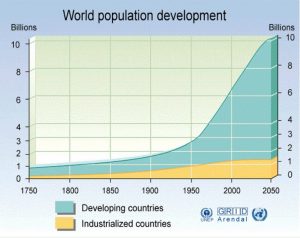
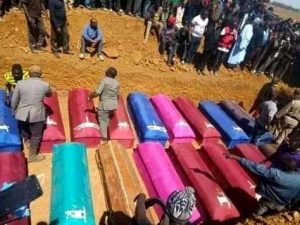
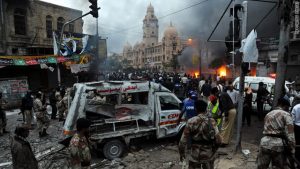
Religious Trends
Phenomenal Growth of Christianity
A Wind in the House of Islam, by David Garrison (Wigtake Resources LLC; 1st edition (1January 2014)). Religious Nationalism
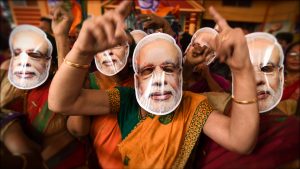
Islamic Revivial
The Siege of Mecca, by Yaroslav Trofimov (Penguin Random House, Sept 2008)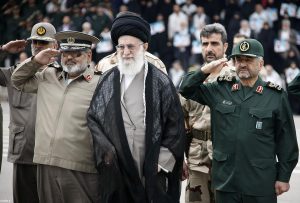
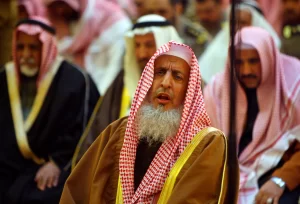
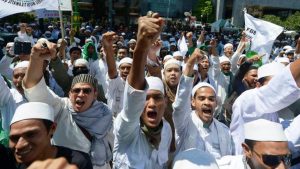
GOD at Work
Elizabeth Kendal
* In April 1875, Muslim pogroms in Batak, Bulgaria, saw some 7,000 Christians burned alive, beheaded and impaled, in what came to be known as the “Bulgarian Horrors”.
* Through 1895-96 Muslim pogroms in Turkish Armenia claimed as many as 250,000 Armenian lives: Christian men, women and children burned and butchered, thousand more either sold into slavery or forcibly converted – TWO decades before the Armenian Genocide.